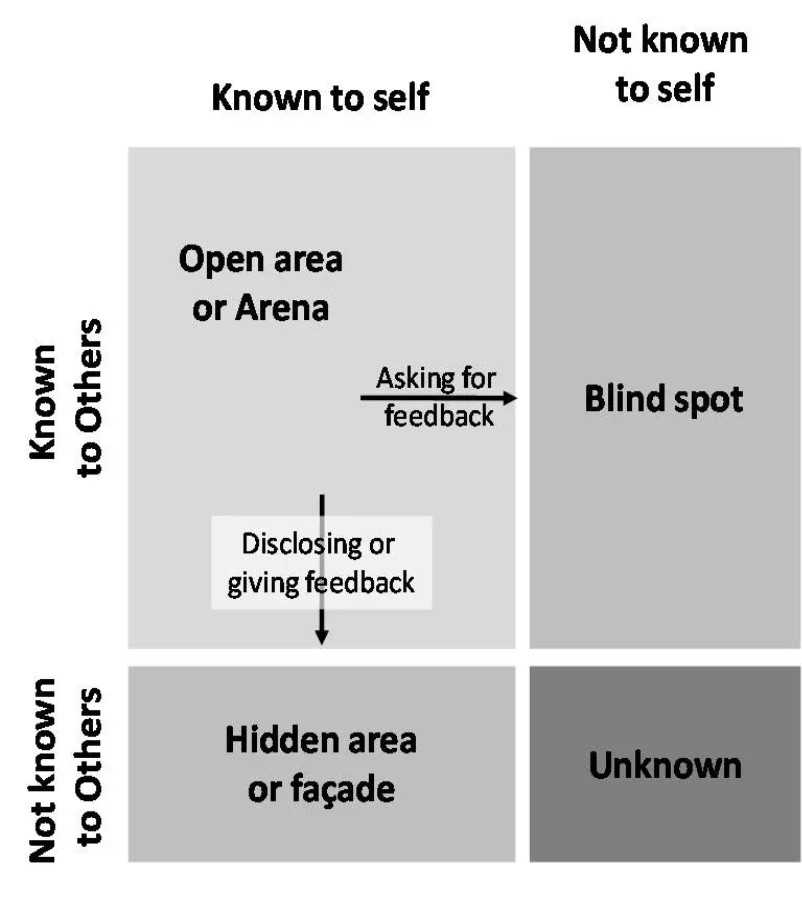Some recent work and the page on Does this make sense, reminded me of many visuals that can help therapy along.
One of them is included at the head of this page. It is the Johari Window – around since the 1950’s – and developed and adapted by others over the years. It is helpful because it can offer insight into how individuals, relationships and organisations might change.
It was created by two psychologists, Joseph Luft (1916–2014) and Harrington Ingham (1916–1995). Luft and Ingham named their model “Johari” using a combination of their first names.
How might it help? What the visual makes explicit is that I do not know all there is to know about me; you do not know all there is to know about me and both of us are in the dark about some aspects of me and you!
Not knowing encourages us to find out
Not knowing can be called Discounting (an aspect of ourselves or other people). We discount when we minimise some aspect of our being or actions as in: “nothin’ to do with me, guv”.
The journey to better understanding is not a straight line although it will require, roughly speaking, a move from top left to bottom right. The ‘safe experiment’ guidance advises that the journey is best taken in small ‘bites’.
The ‘feedback’ referred to relates to the results you obtain from safe experiments and from those around you. This information may help you push out the boundaries of our self-awareness. That’s not so far away from widening our Window of Tolerance (WoT).
The Window of Tolerance (WOT) emphasises personal growth by encouraging us to step outside our ‘window’. The Johari Window encourages us to achieve this by moving from top left to bottom right; to become aware of the unknowns – things we do not grasp about ourselves and others as we mix with people in our lives.
The diagram offers one of a number of specific ways to do this – by asking others for information and by disclosing things, bit-by-bit, in a safe manner. There are other ways of looking at such changes.
Further leads to consider
The other views of scenic routes (1)
The other view of scenic routes (2)
So what ACTIONS might be included in a small, safe experiment?
Other models of Change
